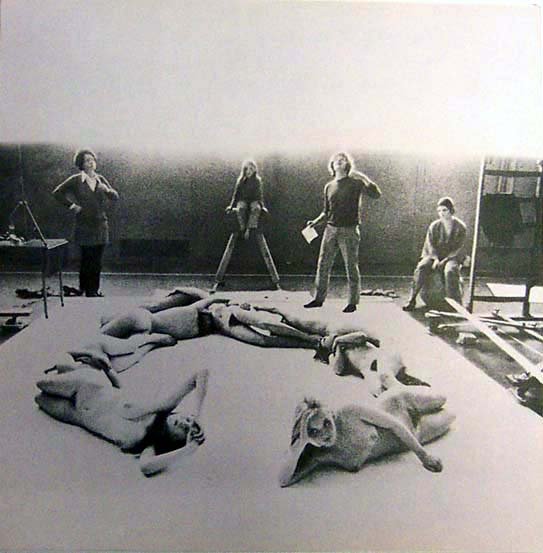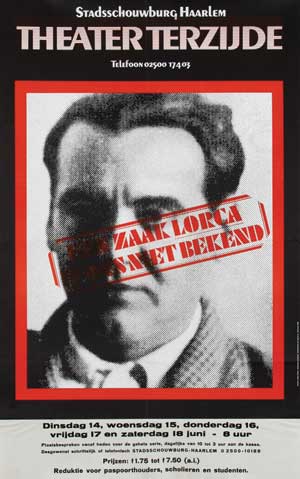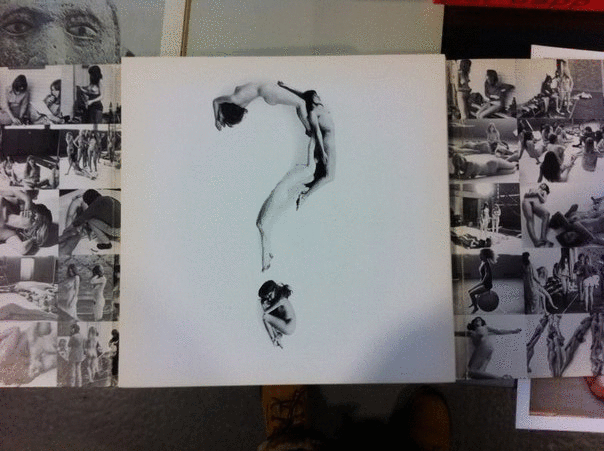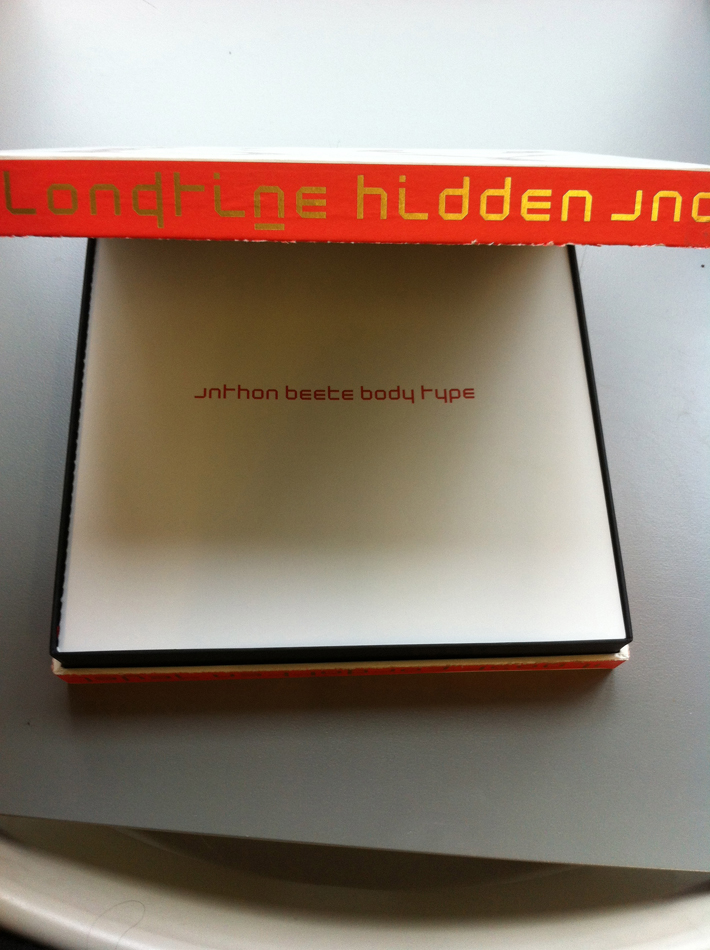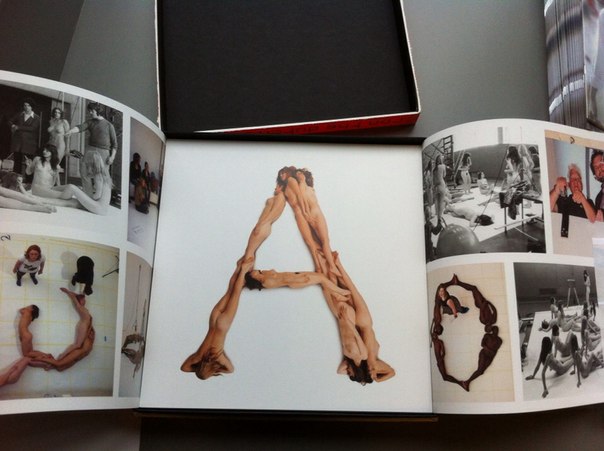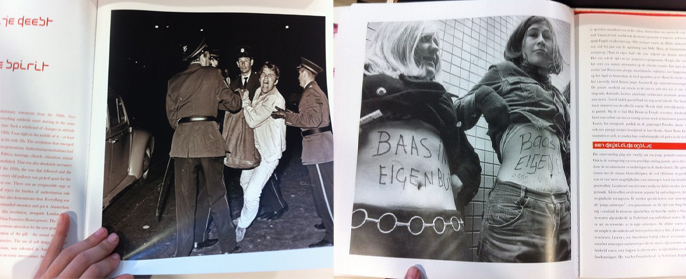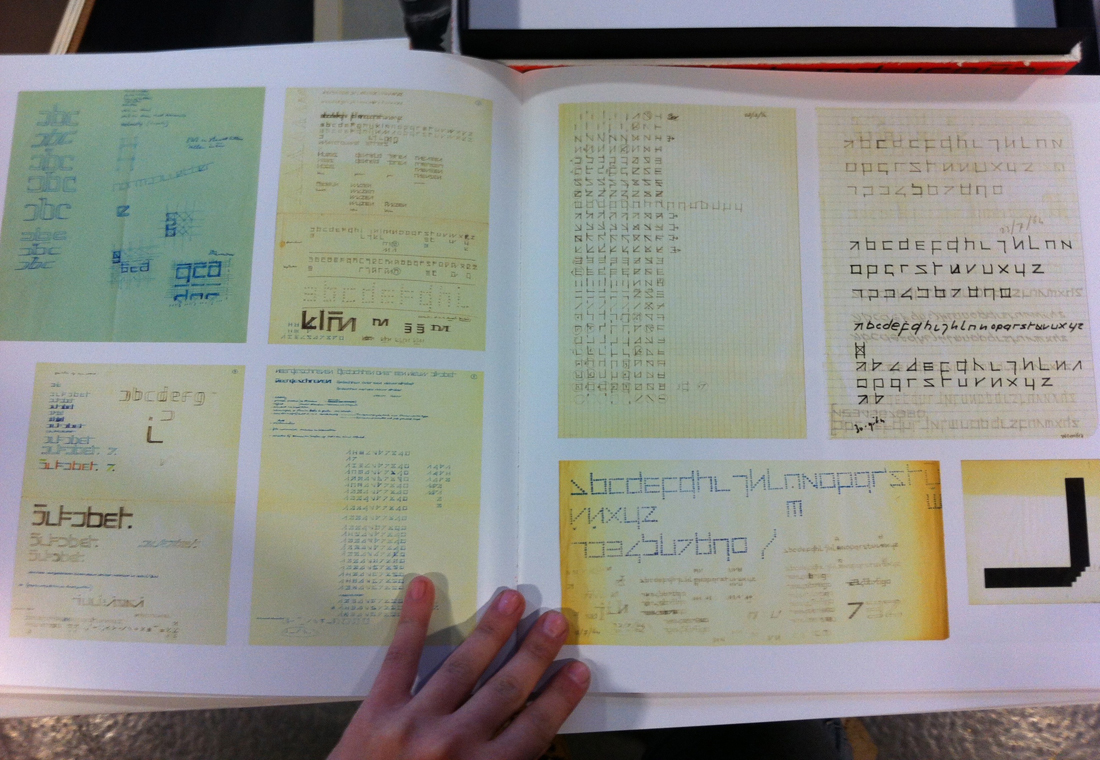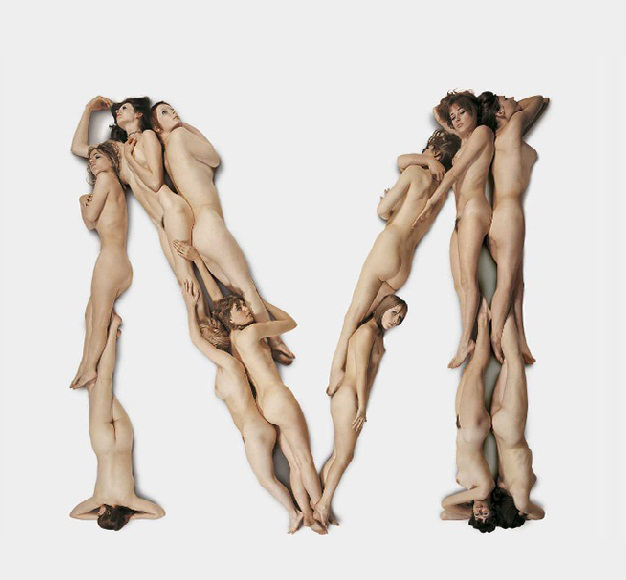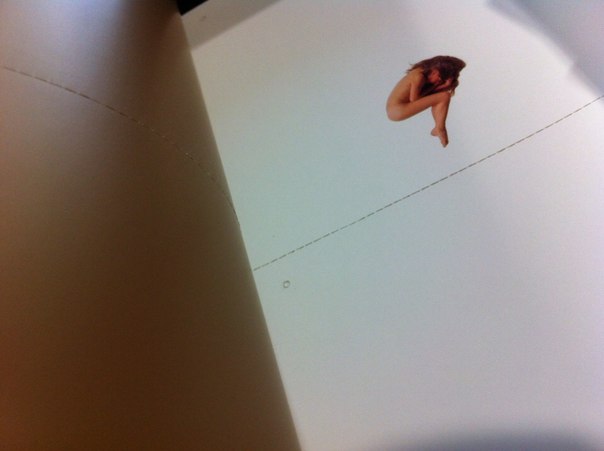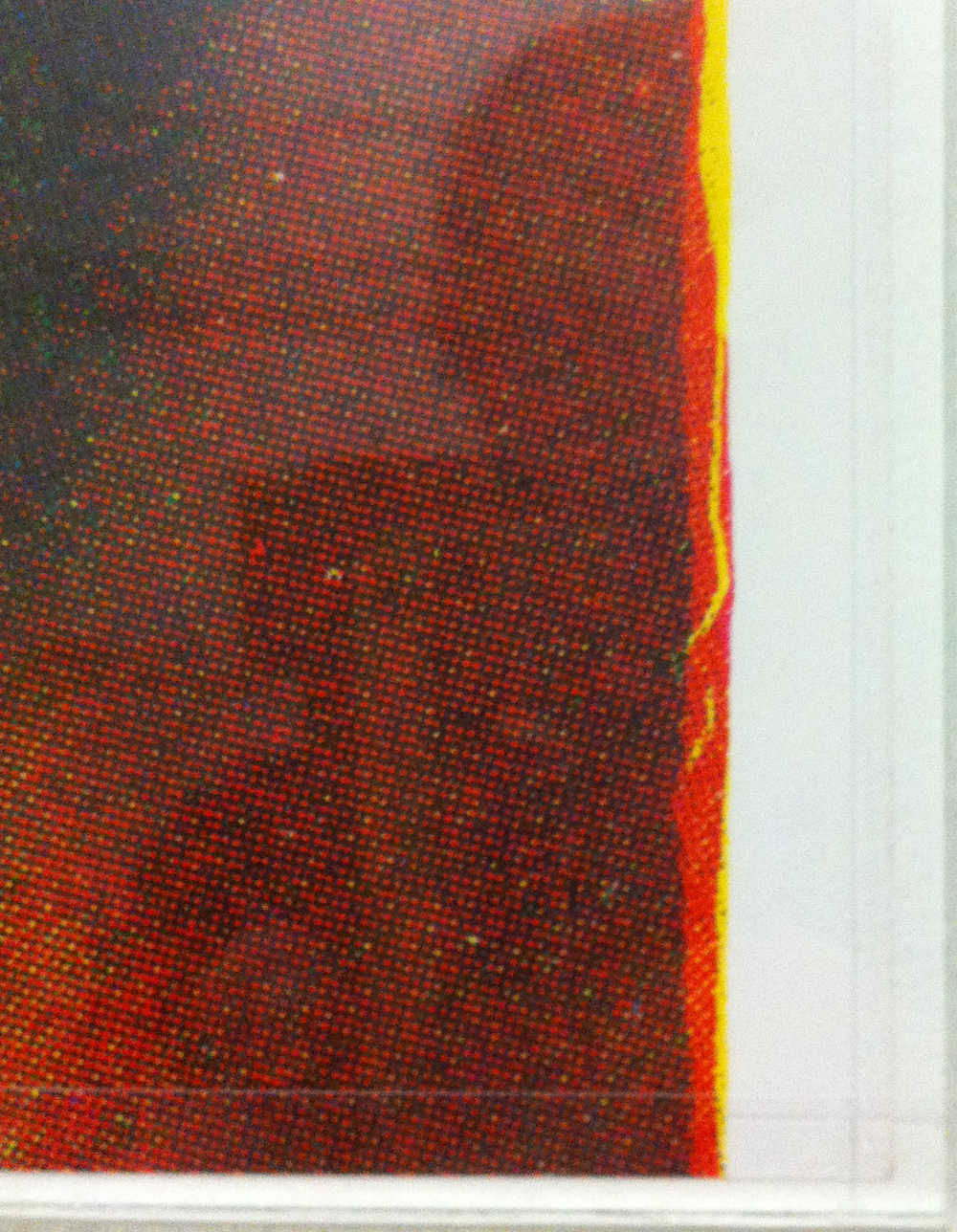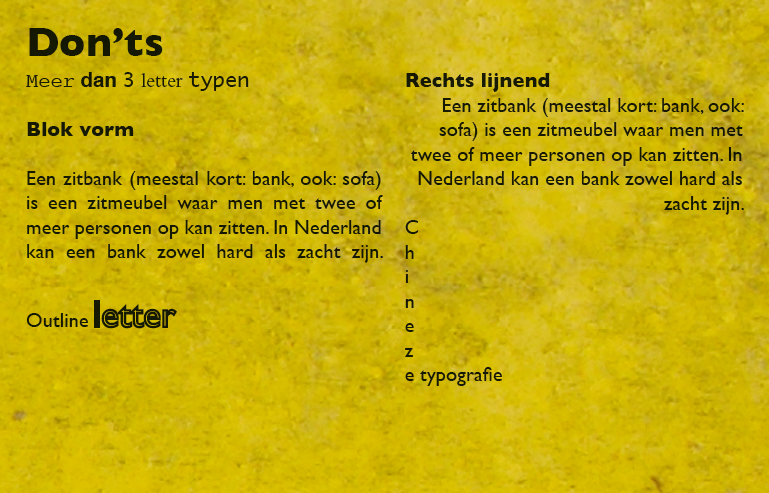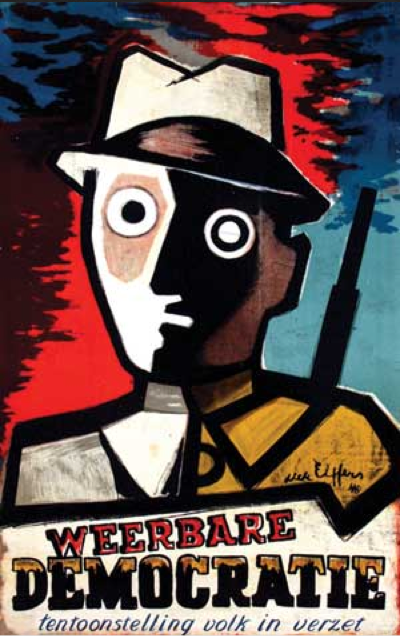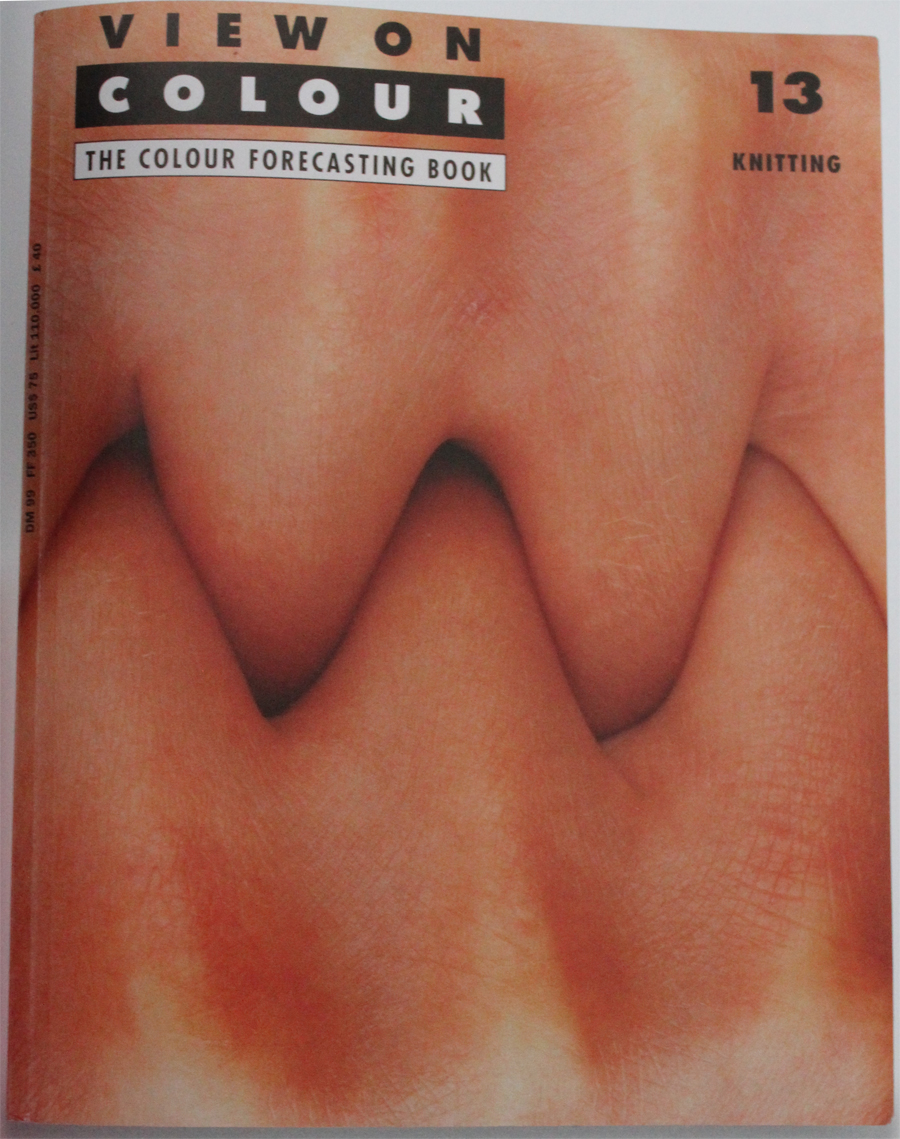Ik ben geboeid door communicatie en woorden, en specifiek in de manier waarop mensen met elkaar communiceren. Het eerste werk dat ik leerde kennen van Anthon Beeke was het ‘Blote meisjes alfabet’. De subtiliteit waarmee hij die schoonheid vertaalde in die naakte lichamen trok mij heel erg aan. Op basis daarvan heb ik besloten om Anthon Beeke te kiezen als onderwerp. Toevallig kwam ik hem tegen en besloot toen om over Anthon te praten via een persoon die dicht bij hem stond en zo kwam ik bij Aaf van Essen terecht.
We waren op uitstap in het Lloyd Hotel, waar we een rondleiding kregen van artistiek directeur Suzanne Oxenaar, toen Anthon Beeke en Aaf van Essen net langs liepen. De tweede ontmoeting vond plaats tijdens de open dag van de Gerrit Rietveld Academie, Hierna vroeg ik Aaf voor een interview over Anthon Beeke, met als vertrekpunt zijn werk ‘Blote meisjes alfabet’.
interview Aaf van Essen
“. . . Ik heb Anthon leren kennen doordat hij een vriend was van mijn echtgenoot en we beide Amsterdammers zijn van dezelfde leeftijd.” Begon Aaf. “Anthon is altijd een kleurrijk figuur geweest in de wereld van ontwerpers en kunstenaars. En dat heeft ook wel te maken met het feit dat hij een hele aparte manier heeft van denken en functioneren. Voor ik besloten had naar de Gerrit Rietveld Academie te gaan, was ik verpleegster. In 1986, toen ik 46 was, begon ik aan de Rietveld Academie. Anthon hoorde dit en zei tegen me: “Aaf, doe die Rietveld niet, kom maar gewoon bij mij, ik leer je het vak.
Het is ook een lastige man, dus ik dacht ja, als je een nieuw vak wilt gaan leren, dan moet je ook dom kunnen zijn. Als je niet dom mag zijn omdat een ander verwacht dat je het allemaal weet en kent en doet, dan gaat het helemaal niet goed. Dus toen heb ik gezegd; Ik kom wel op je studio werken, maar ik ga wel gewoon naar school.”
“. . . Waarschijnlijk kan dat wel als hij al te beschrijven is, ik denk door zijn fotografische kwaliteiten dat je hem zelf ook als een soort foto zou kunnen beschrijven. Als ik hem voor de geest haal, dan zie ik een man met een grote bos wit haar. Een zwarte goede regenjas van Japanse snit. Eigenlijk staat dat voor een soort rotsblok, een eigenwijs rotsblok. Ik denk dat zijn gevoel voor humor hem uit heel veel ingewikkelde situaties heeft gezet. En het is een plastische man, een muzikale danser. Hij ziet in heel veel dingen muziek. En dan zijn dat eigenlijk de ingrediënten waarmee je zo een goede ontwerper wordt. Daar moet je het mee doen”.
“. . . Anthon Beeke heeft de schoonheid van de naakten heel delicaat behandeld bij de productie van het ‘Blote meisjes alfabet’ van 1969. Er ligt meer nadruk op de vorm, die van de letters. Het naakt valt minder snel op” Zijn liefde voor vrouwen en het veilige gevoel dat hij ze geeft, is duidelijk zichtbaar in het resultaat van het ‘Blote meisjes alfabet’”.
De herwerking van 2011 is in samenwerking met Wim Crouwel geweest. Dit is te herkennen door het gebruik van het typeface ‘The New Alphabet’ in het boek. Dit alfabet is gebaseerd op de opkomende computertechnologie in 1969. Het werd door Wim Crouwel ontwikkeld en gepresenteerd in het kwadraat bladen formaat. Dit komt ook terug bij ‘The Body Type’ waar ze de nummers 1 tot en met 9 in de vorm van naakte zwarte mannen hebben toegevoegd
“. . . Waar zo een zwarte man voor staat kan je heel makkelijk zo uitvergroten, dat doet hij dus niet [x]. Nu is hij van plan hetzelfde met volumineuze vrouwen te doen, dit is niet heel evident, bij een ‘l’ bijvoorbeeld wordt de vorm ontzettend geaccentueerd. Maar misschien komt hij daar goed uit.”
“. . . Gedurende dezelfde tijd als “the Body Alphabet” was er een culturele revolutie in Amsterdam, ook op het gebied van theater. Deze revolutie heette ‘Aktie Tomaat'[x], zij waren heel erg tegen het traditionele van toneel maken. Toen deze revolutie zijn effect had op toneel, begon je dat ook te zien in het straatbeeld in de vorm van de affiches. Toen deze belemmering was verdwenen en het theater vrij spel had, kon dit ook worden doorgewerkt in de affiches.”
Anthon’s eerste affiche voor een theater was in 1966 voor Theater Terzijde. Sindsdien van 1966 tot 1985 heeft hij de affiches en programma’s voor Zuidelijk Toneel Globe ontworpen [x]. Vanaf 1987 tot ongeveer 2001 bepaalde Anthon het gezicht van Toneelgroep Amsterdam. In overleg met de directeur van Toneelgroep Amsterdam vertaalden ze het toneelbeeld in affiches.
Veel affiches van Toneelgroep Amsterdam bevatten naakt. Dit resulteerde in nog een controverse, aangezien deze affiches overal op straat hingen en dit was destijds erg provocatief.[x]
“. . . Ik vond het altijd heel erg opvallend dat dit beeld op straat niet beklad is geweest. Aangezien dat best vaak is gedaan ook met ander werk. Hij vond het zelf niet storend, en ergens wel goed dat het een bepaalde reactie opleverde. Maar dus wel opvallend dat dat niet is gebeurd met dat werk, hij vond het wel geestig, het is ook heel discreet ontworpen.”
“. . . Ik denk dat Anthon toch op de een of andere manier miraculeus raak heeft geschoten.”
interview Aaf van Essen
